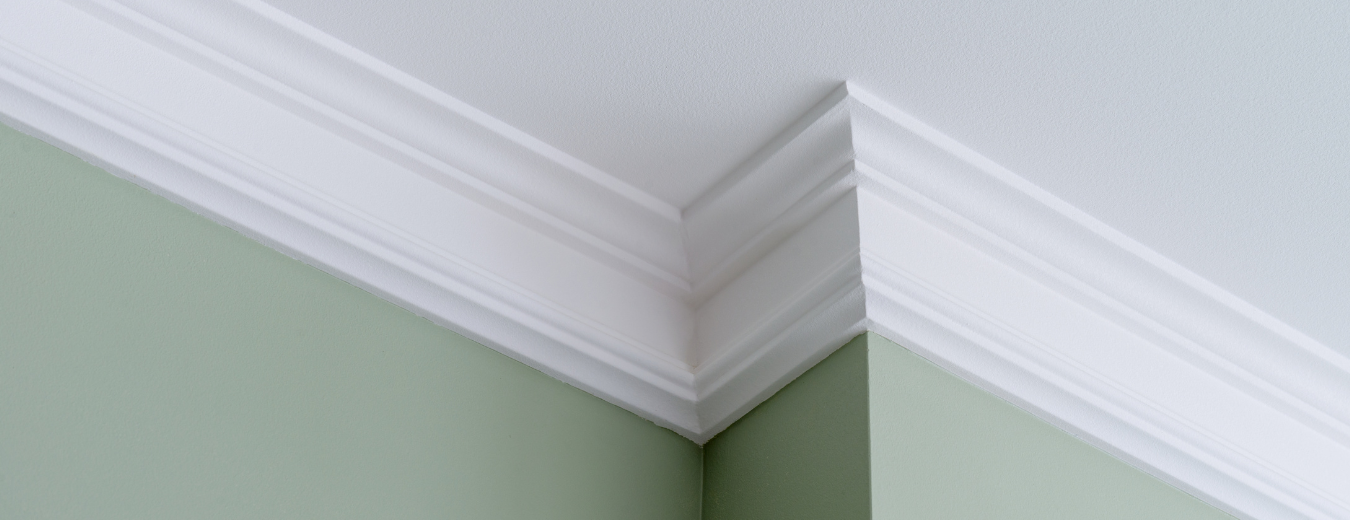
The Ins and Outs of Crown Molding
Posted on February 28, 2022
It’s a small extra but it makes a huge difference. Have you seen one room that looks more put-together or more stylish than another? Chances are the more stylish option has some sort of crown molding in the room.
It is the extra cherry on top in the world of interior design. Crown molding is the stylish overhead molding that adds architectural character while producing a visual separation between the walls and the ceiling. Whether installed to conceal cracks or an inferior taping job, or purely for aesthetics, crown molding brings elegance and personality to your space.
Crown Molding Basics
Sometimes called cornices, crown molding dates back to ancient Greece, where craftsmen and builders chiseled ornate moldings from travertine stone or molded them from plaster.
In today’s terms, crown molding is any horizontal trim that separates the walls from the ceiling or adorns the tops of other architectural elements, such as door casings and cabinets. More specifically, crown molding is the term for a particular trim shape contoured to fit at an angle between the wall and ceiling. Yet manufactured crown molding comes in a variety of designs, and in-stock widths ranging from 1-½ inches to 7-½ inches.
The image to the left is an example of larger crown molding. This type of molding you’re likely to see in a formal courtroom or federal building. It is usually crafted from multiple pieces of trim. Professionals can create large cornices by combining crown molding with additional types of molding, such as baseboard, beadboard, cove, and other types of trim to produce an imposing custom look.
Crown Molding Materials
If you’re unfamiliar with the trim aisle at your local DIY store, you might be surprised to find crown molding is manufactured from a variety of materials. Each material has its pros and cons. The professionals at CertaPro can help you decide which material is best for your home.
Wood
Wood crown molding is the industry standard, and you can choose from paint-grade pine or, if you prefer to stain the trim, a variety of hardwoods, including ash, oak, and walnut.
Simple wood crown molding costs around $1 per foot for plain pine wood and goes up in price depending on size and ornateness. However, you could pay as much as $30 a foot for large hardwood crown molding with features & elaborate milled designs.
Fiberboard
Medium-density fiberboard (MDF) molding is produced by combining sawdust and resin under pressure to form trim pieces. This is a less-expensive option. You can get larger, more detailed crown molding for between $1 and $7 a foot, depending on the design.
A lot of MDF molding is meant to be painted, but you can find stock designs that come with a thin veneer that’s suitable for staining too. The downside to MDF is its softer nature, which makes it prone to nicks and scratches.
PVC
PVC and polyurethane moldings hold up well in bathrooms and other high-humidity areas where wood tends to warp. Molded and extruded, these moldings are lightweight and easy to cut. Their cost ranges from around $2 to $4 a foot. This type of crown molding is usually installed with construction adhesive, making it DIY friendly, but design choices are limited.
Polystyrene
Polystyrene molding is budget-friendly and, like PVC and polyurethane, a snap to cut and install with foam-safe adhesive. It starts under $1 per foot, but it dents easily and, upon close inspection, its texture resembles the foam used to make foam-type coffee cups. Two or three coats of quality paint will help smooth out the surface texture.
Plaster crown molding
Plaster crown molding is best suited for large elaborate designs on high ceilings, such as two-story entryways, where it commands attention and creates a strong visual impact. You won’t find this specialty item at DIY centers but can order custom-cast designs from many traditional lumberyards. Plaster crown is pricey, up to $30 a foot, plus it requires professional installation.
CertaPro Can Help!
Your CertaPro painters can help you with your crown molding project. Our professionals know how to assist you in choosing the right molding and the correct colors. Then we will install your choices to make your room look more stylish and complete.
If you are considering completing your interior painting project, why not have us install your crown molding first? Then they will paint the molding and the walls for an entire completed look. Don’t hesitate to schedule online for a free project estimate today!





